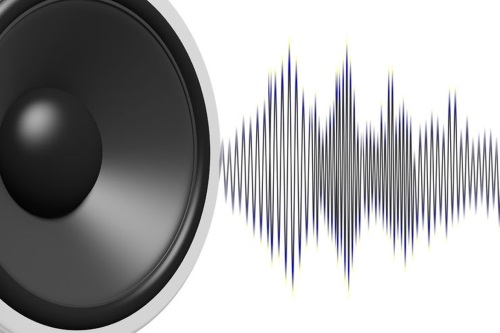Live mix engineers use social comparison to mold and sculpt the beginnings of our opinions of our work. As newbies, we ask more experienced engineers why they use “X” piece of gear in “Z” situation. Even when we work for years and create our own opinions of gear and practices, we can’t help but ask other engineers what they use or how they handle something.
We even take the opinions of others to judge their ability to do their job: “Oh, you use (insert common mic model) on a guitar amp? Alrighty, then.” I’ve got some pretty unpopular opinions about all of this.
Inordinate Focus
Loudspeaker specifics have way less of an impact on the sound of a show than some think. Of course there are differences in design and electrical components, and so on. Do crossover filters matter? You bet. Cone diameter? Sure.
The sum of these differences, though, does not qualify as an excuse for a poor mix. I’m often asked what loudspeakers I’m running at some venue where I happen to be working at the time, and more often than not, I can’t supply an answer. I don’t memorize brand or model numbers unless there’s something extraordinary about the product.
The band that I regularly work with has been using the same set of subs and tops for years. Absolutely lovely loudspeakers that can really take a beating. I know the manufacturer, but model numbers? No clue.
A quality loudspeaker won’t compensate for a lack of ability on my part. Really nice loudspeakers are just that – really nice. Of course I want to mix on a great system – who doesn’t? As long as we’re dealing with a competently designed, professional-level product, I think they’re all pretty close.
(There’s an angry mob gathering outside my office as I type this.)
I’ve been scoffed at by another engineer for my inability to recall the brands and models of loudspeakers at one of my jobs. I couldn’t help but ask why it mattered so much to him, since he loved to bury his vocals to the point of inaudibility, regardless of what system he used. I could make up some opinion about certain boxes just to “fit in,” but my focus is on what I consider to be more important areas.
Most of the time I’m told what the sound system will be, constrained by budget, time, and availability. I only care about the brand and model long enough to calculate the splay angles, when necessary. I’ve been in venues that have amazing loudspeaker systems and I’ve worked gigs with off-brand crud. If the mix sounds bad, it’s still on me as the engineer. I don’t like putting all of this responsibility on one part of the system, and I think it’s an amateur move to do so.
Knowing The Essentials
Generally speaking, I’ve found that engineers employing more plugins than channels are not very good at using the former. Before driving a Maserati, it’s vital to understand how to work a stick shift. If engineers truly understand how to use stock plugins then they’ll likely find that there’s no need to have 60 additional different pieces of software at the ready.
Note that I’m not referring to plugins that may be useful for special effects, nor to veteran engineers that utilize plugins appropriately in mixes of high quality that speak for themselves. Rather, in particular I see so many young engineers who spend so much time trying to keep up with all of the “shop talk” about the latest plugins and not nearly enough time focused on crafting their skills using the basic tools of the trade. It makes me cringe when a newbie is wildly spinning knobs on plugins but is unable to get feedback under control.
Live sound is all about making the best of the given situation. I have trouble trusting someone who can’t get listenable results out of stock gear. Sure, I possess some plugins that come in handy on occasion, but 98 percent of the time, the channel strip in front of me should be enough to get the desired results. It’s so much more impressive to me to experience a great-sounding show mixed on an older, run-down console in the hands of a true professional.
Being Objective
Just because there’s a guitar on stage doesn’t mean it should be singeing off our eyebrows. I see/hear a lot of rock-loving audio folk get a little heavy-handed when it comes to the instrument that is obviously their favorite. For example, “Modern Worship” as a musical genre does not usually mean guitar riffs featuring a singer.
Heavy and present guitars totally have their place in some genres, but I just can’t enjoy much of the mix if it’s 50 percent guitar with the other half shared among everything else on stage. Perhaps I should qualify this statement by adding that acoustic guitars often bring a lot to a mix. But electric guitars are so easy to overdo and can also bring a lot of stage noise to the equation.
Aside from cranking solos, I don’t tend to put guitars too much out front. There’s usually an abundance of instruments playing interesting parts, so I rarely default to giving guitar the head of the table. I’ve said in other articles that vocals are the most important thing coming off the stage, and I stick by that.
However, for those who really love guitar but aren’t mixing a specifically guitar-centric genre, try taking it down further than you might be comfortable with. For the sake of balance, turn it down to the point of either being completely out of the mix or disturbingly low. Then slowly turn it up. Keep dialing up until it’s at the same level as the quietest instrument, then push it up a little more. Now push it until it’s overpowering the other instruments. How does this compare to your normal level?
Guitars are great, but let’s give the other elements their due. Objectively striving for balance in the mix rather than subjectively satisfying our own tastes will produce a better overall result.





















